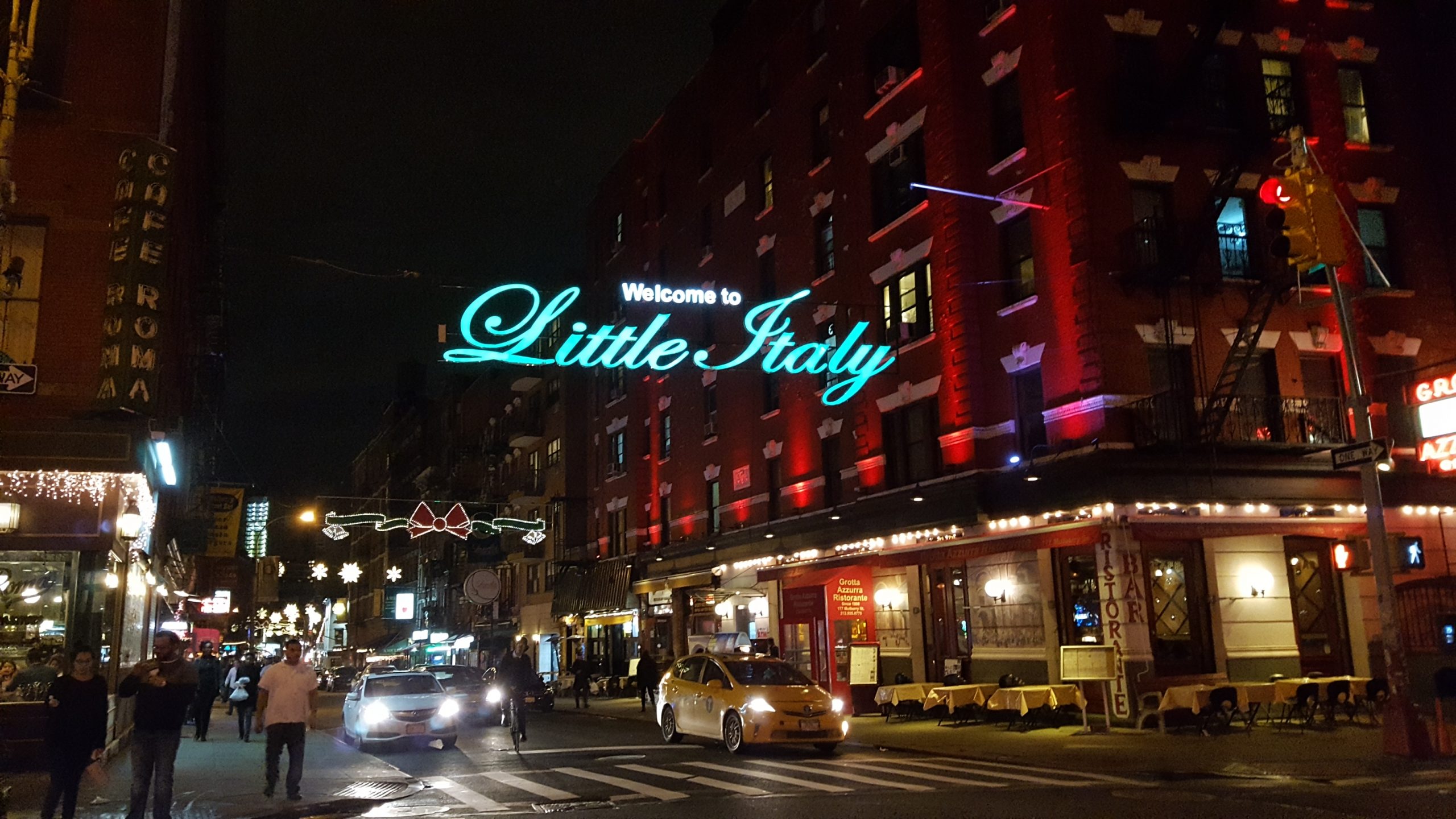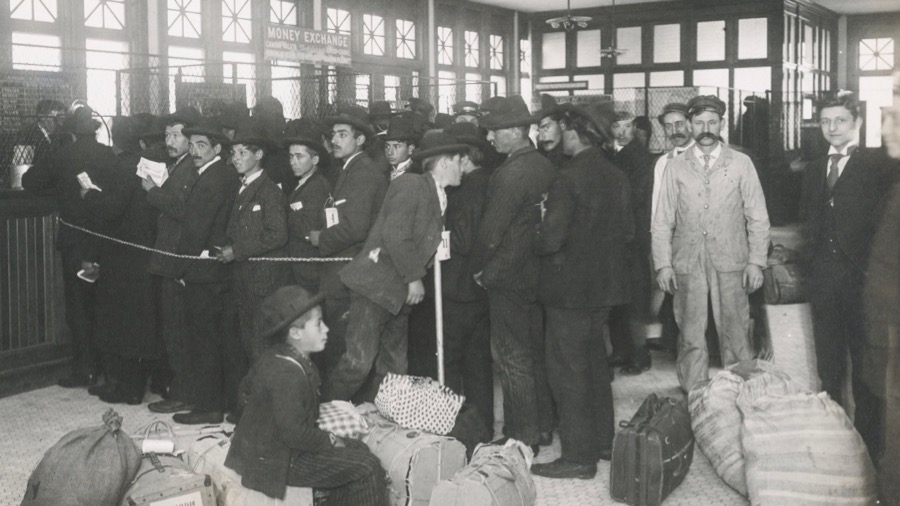Heritage
You Should Visit NYC’s Little Italy

Little Italy’s Story
Dominating three blocks on Mulberry Street, New York is Little Italy; a little, yet a vibrant slice of New York’s history. In the beginning, Little Italy was one of many ethnic neighborhoods located in the area; placed there by those who settled in New York first to ensure separation of the “true” settlers and the immigrants. To the delight of everyone today, New York welcomed not only these Italians immigrants, but their customs, traditions, and their beloved cuisines, like spaghetti. Despite popular belief, the spaghetti and meatball dish didn’t come from Italy. It actually originated here, in Little Italy, by Southern Italians.
Little Italy was also much larger than the three blocks it currently occupies due to the influx of Italian immigrants at the time. The reduction of Little Italy’s dominance happened after World War II, when the U.S. Immigration Act of 1965 dismissed immigration restrictions, and Chinese immigrants began to migrate to America in great numbers. To make room for the rapidly expanding Manhattan Chinatown, Little Italy was reduced.
Despite these devastating reductions, the Italian Americans never lost hope nor focus, even after September 11’s tragedy in 2001 when times became even more difficult for the residents. Even now, the borders that define Little Italy are still shrinking, forcing the locals who have an extensive history with the location to continue fighting to keep Little Italy alive. The number one cause for this is the rising rent that continues to push residents and stores out. Worse yet, Little Italy and Chinatown were listed as one historic district by the National Register of Historic Places in 2010. Still, these struggles empowered the people and motivated them to keep their beloved neighborhood, a prominent piece of their history, alive.
These efforts proved quite successful, and have built upon the old neighborhood with modern additions that still maintain the feeling of old souls belonging to a time of new beginnings and hopes to succeed in America’s growing industrial age. To this day, Little Italy remains strong and vibrant with life. Some refer to Little Italy as an open-air theme park bringing everyone to an authentic representation of the nineteenth- and twentieth-century lifestyle for European immigrants. As a sociologist and professor from the University at Albany put it, “ethnic tourism — not only by Italian Americans but by people who want to see an authentic urban village — keeps these neighborhoods going.”
Feast of San Gennaro
The truth of these words is in the very cultural attractions, such as Little Italy’s Feast of San Gennaro, offered to anyone and everyone curious enough to visit. The Feast of San Gennaro is an annual gathering that lasts for 11 days in September. Throughout the feast, everyone will celebrate the Italian American culture and food. Be ready to take part in their religious processions, phenomenal parades, live music, and more. Originally, it was a one-day celebration set on September 19 to celebrate the Patron Saint of Naples, Saint Januarius. It’s hard to pinpoint when this change started, but trust that no local nor tourist is complaining!
A Walk Down the Streets
Just by arriving at the narrow streets of Little Italy, you’ll be greeted by an old-world charm of red, white and green garlands, and vintage Italian storefronts. Focusing around you, you’ll find hawkers trying to lure you and anyone else their way. More often than not, they’re aiming to sit you down their restaurants, menu at hand, and hope you’ll take the time to enjoy what they have to offer. Of course, not every restaurant will offer what you’re looking for.
Benito One
If it’s a truly traditional Italian meal on your mind, you’ll want to find yourself in Benito One, which has been comfortably settled in Little Italy since 1968. Prepare to be greeted by the tantalizing aroma of fresh food and baked goods upon arrival. According to locals, this is the perfect rendezvous with family and friends for lunch, dinner, or just to sample their extensive list of wines. There’s a family history attached to this restaurant, too. It’s owned by a family that has lived in the same apartment on Mulberry Street since their ancestors arrived in New York. Currently, the owners are two brothers, Nick and James Bari, who are determined to keep the restaurant’s family-oriented aesthetics. A browse through the pictures on their walls will tell a tale of their very family: parents, grandparents, even great grandparents.
Umberto’s Clam House
While their pastas and wines are glorious and forever enticing, sometimes we all have a craving for something else, like seafood. What better place to enjoy seafood than Umberto’s? And don’t worry, the restaurant is safe despite the mafia folklore attached to the name. Umberto’s current location is actually two spots away from its original location. While widely known for its must-have dishes of calamari, mussels, and the like, there’s no denying the thrill of entering a restaurant with such an exciting history. The story claims the restaurant was opened in 1972 by Umberto Ianniello. Roughly two months later, a gangster known as “Crazy Joe” was shot several times, then died after stumbling out onto the street. Again, there’s no need to worry if the thought of dining at the place someone died is daunting. The mob hit happened at the original site, so the current Umberto’s has a clean and mafia-free record. Here, you can enjoy your lobster bisque, shrimp parmigiana, and more with peace in mind.
Sightseeing
Of course, restaurants aren’t the only attractions in Little Italy. The very architecture is a treat to admire. The buildings appear preserved through the ages and really make you feel like you’ve walked back in time. High above, you may even catch sight of gargoyles watching over Little Italy. For those fascinated by Italian culture and history, the Italian American Museum is a prime stop full of wonder and fascinating stories. There’s also St. Patrick’s Old Cathedral, which once sheltered Italian immigrants from the aggressive Irish at the time.
-

 Heritage5 years ago
Heritage5 years agoA Rough Beginning For Italians in America
-

 Heritage5 years ago
Heritage5 years agoWhat it truly means to be Italian
-

 Italian5 years ago
Italian5 years agoNew York vs Chicago Pizza
-

 Heritage5 years ago
Heritage5 years agoItalians And Family Values
-

 Italian5 years ago
Italian5 years agoTop 9 Popular Italian Pastries
-

 Heritage5 years ago
Heritage5 years agoEllis Island Italian Americans
-

 Italian5 years ago
Italian5 years agoIn 1962, an Italian magazine carried a story on how the world will look in 2022. Is it Real???
-

 Heritage5 years ago
Heritage5 years agoHow Italian American families celebrate holidays






